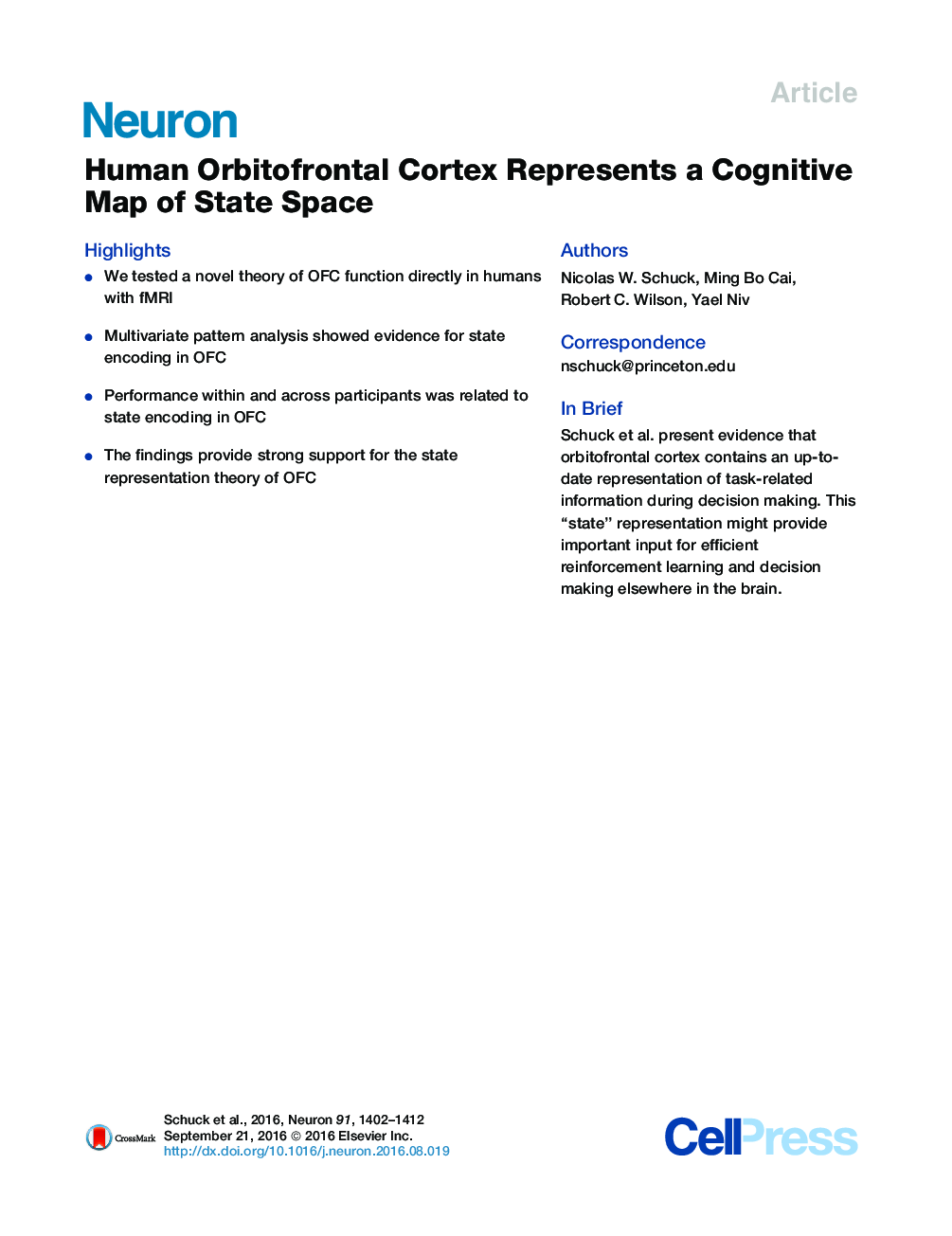| Article ID | Journal | Published Year | Pages | File Type |
|---|---|---|---|---|
| 4320644 | Neuron | 2016 | 11 Pages |
•We tested a novel theory of OFC function directly in humans with fMRI•Multivariate pattern analysis showed evidence for state encoding in OFC•Performance within and across participants was related to state encoding in OFC•The findings provide strong support for the state representation theory of OFC
SummaryAlthough the orbitofrontal cortex (OFC) has been studied intensely for decades, its precise functions have remained elusive. We recently hypothesized that the OFC contains a “cognitive map” of task space in which the current state of the task is represented, and this representation is especially critical for behavior when states are unobservable from sensory input. To test this idea, we apply pattern-classification techniques to neuroimaging data from humans performing a decision-making task with 16 states. We show that unobservable task states can be decoded from activity in OFC, and decoding accuracy is related to task performance and the occurrence of individual behavioral errors. Moreover, similarity between the neural representations of consecutive states correlates with behavioral accuracy in corresponding state transitions. These results support the idea that OFC represents a cognitive map of task space and establish the feasibility of decoding state representations in humans using non-invasive neuroimaging.
